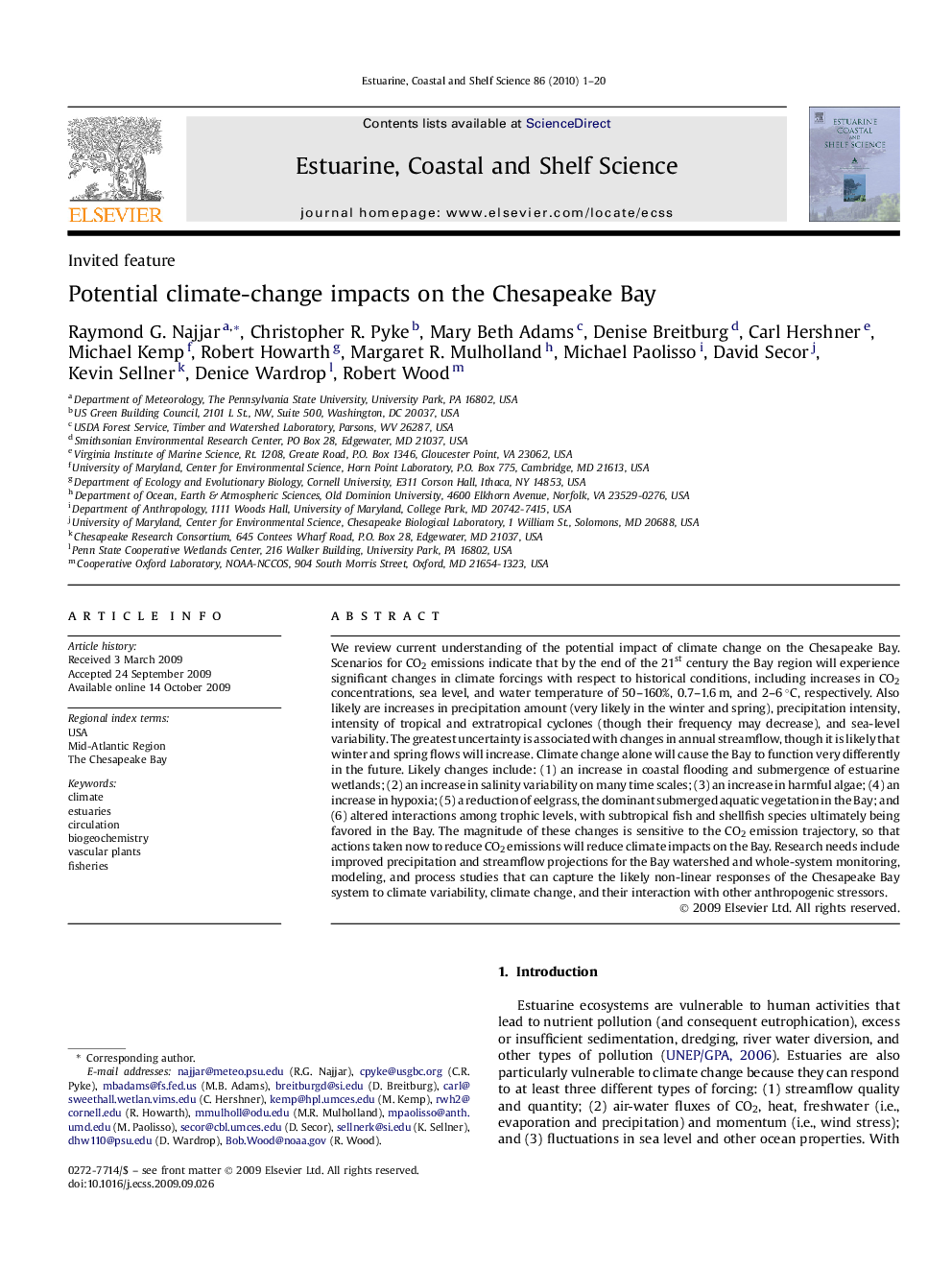| Article ID | Journal | Published Year | Pages | File Type |
|---|---|---|---|---|
| 4541108 | Estuarine, Coastal and Shelf Science | 2010 | 20 Pages |
We review current understanding of the potential impact of climate change on the Chesapeake Bay. Scenarios for CO2 emissions indicate that by the end of the 21st century the Bay region will experience significant changes in climate forcings with respect to historical conditions, including increases in CO2 concentrations, sea level, and water temperature of 50–160%, 0.7–1.6 m, and 2–6 °C, respectively. Also likely are increases in precipitation amount (very likely in the winter and spring), precipitation intensity, intensity of tropical and extratropical cyclones (though their frequency may decrease), and sea-level variability. The greatest uncertainty is associated with changes in annual streamflow, though it is likely that winter and spring flows will increase. Climate change alone will cause the Bay to function very differently in the future. Likely changes include: (1) an increase in coastal flooding and submergence of estuarine wetlands; (2) an increase in salinity variability on many time scales; (3) an increase in harmful algae; (4) an increase in hypoxia; (5) a reduction of eelgrass, the dominant submerged aquatic vegetation in the Bay; and (6) altered interactions among trophic levels, with subtropical fish and shellfish species ultimately being favored in the Bay. The magnitude of these changes is sensitive to the CO2 emission trajectory, so that actions taken now to reduce CO2 emissions will reduce climate impacts on the Bay. Research needs include improved precipitation and streamflow projections for the Bay watershed and whole-system monitoring, modeling, and process studies that can capture the likely non-linear responses of the Chesapeake Bay system to climate variability, climate change, and their interaction with other anthropogenic stressors.
